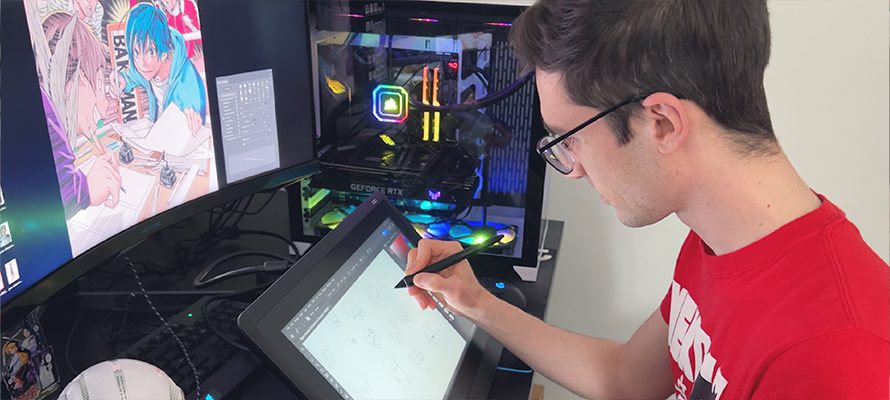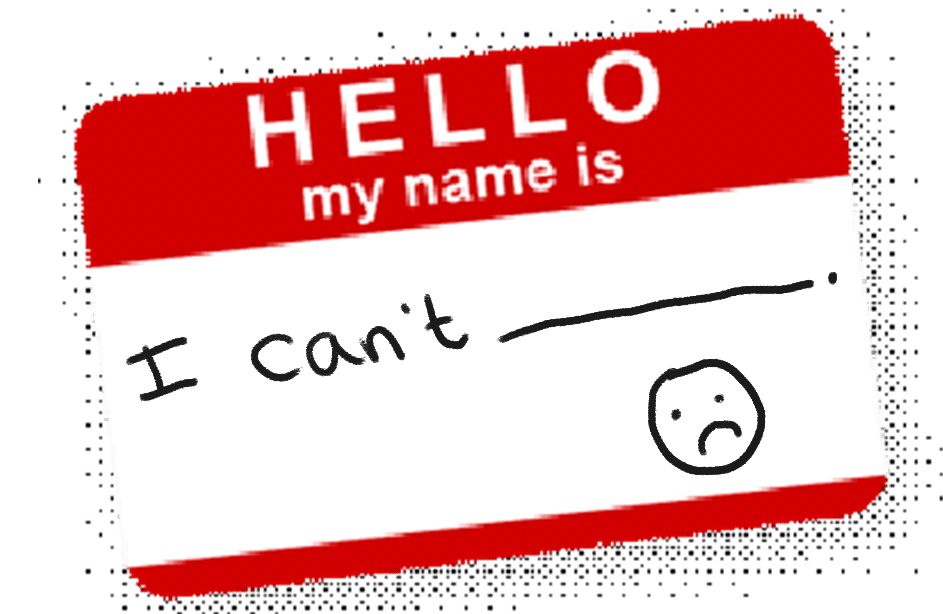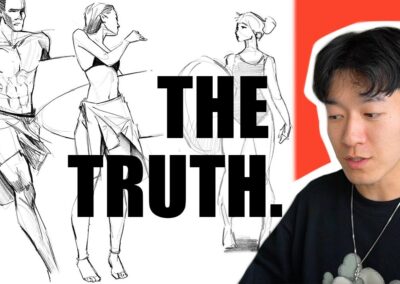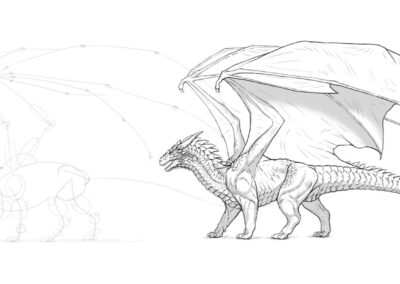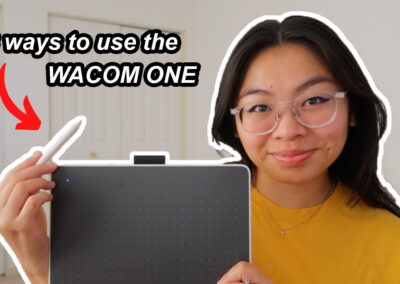Your growth from beginner to professional artist starts with your mindset. The career you sustain beyond that will thrive if you can continue that mindset for a lifetime.
If you’re drawing characters, you need to know anatomy and perspective. If you’re painting environments, you need to know value, color, and how to design. There are lots of basics when it comes to being a professional artist, but there’s one, in particular, that’s overlooked and should kick in before you even start your creative process.

aaron-blanco-tejedor-VBe9zj-JHBs-unsplash
Where most artists fail
When I first started out as an artist, every drawing was a clear indication that I had A LOT to learn. That’s the kind version of saying everything I made sucked.
When you’re a beginner, that’s not what you see. You’re learning rapidly and your eyes are at the precipice of your art journey. You see great work and incredible improvement. It doesn’t matter yet if you’re good because you’re having fun. It’s how you were as a kid.
At a certain point, you start to care about the quality of your work. This is usually when you become invested in another artist’s work so much that you begin comparing your work to theirs.
The first digital artist I found was Charlie Bowater and her work blew me away. There was so much detail, the painting was clean, and the composition was beautiful. I looked at my own work and saw a huge gap to get where she was. Every drawing prior to that point was for fun and now there were real stakes involved. I wanted to be an amazing artist. The only problem – it looked impossible.
charlie bowater (@charliebowater) • Instagram photos and videos
This is the trap you fall into as an artist. You see work that feels out of your reach and you assume it’s impossible for you. Little do you know that by adopting that mindset, you’re fulfilling your own prophecy.

ashkan-forouzani-sefKM7XR56I-unsplash
Growth mindset vs fixed mindset
If you were to adopt the mindset that drawing a character or environment is impossible, you’ll prevent your own skills from developing. On the flip side, if you believe that drawing that same character or environment is possible, that you can learn to do it, you are more likely to maximize your potential.
Learning to draw is an overwhelming experience. There’s so much to learn and it can be very easy to fall into the belief that learning all of it feels impossible. That mindset alone can make it true – something you definitely never intend to do if you really want to become a professional artist. This is why you want to adopt a growth mindset.
A growth mindset is a belief that your intelligence can be developed. Skills like drawing and painting, although challenging, can be acquired through practice. When you believe that your intelligence can be developed, it changes how you learn. You’re more willing to tackle challenges and face down obstacles with perseverance. Failure becomes a part of the process rather than the opposite of success. You have higher levels of achievement because you simply believe you can improve.
A fixed mindset is the opposite. You avoid challenges because you think you can’t get past them. You see failure as a disappointment and give up before you put in any real effort. Even the success of others is a threat to you instead of being a lesson or inspiration.
Your view of yourself can determine your future potential. Do you want to waste your time or do you want to believe in your capacity for growth and start getting better at drawing?
Stop labeling yourself
Before you start thinking “this isn’t me” you might want to observe your nature carefully. One of the easiest traps to fall into is when you pin yourself in a hole as a “kind of person”.
Have you ever said the following?
- “I’m just not good at perspective.”
- “I can’t draw hands.”
- “I can’t come up with ideas.”
- “I can’t get used to my Wacom tablet.”
- “I’m not an artist.”
Remember: every beginner artist out there likes to use the term “aspiring artist” in their profile – like they have to cross some imaginary boundary of skill before they’re worthy of calling themselves an artist. You are an artist. It happened the moment you decided to become one. Telling yourself that you’re aspiring to become one makes you develop a mindset where you’re somehow worthless. That doesn’t lead to positive growth.
Saying any of these is detrimental to a growth mindset. You’re turning what you believe about yourself into reality. These things don’t have to be true. You can get better at perspective or using your Wacom tablet, but you have to believe that you can. If you keep telling yourself you’re bad at it or you can’t do it, there’s little chance that you’ll ever improve.

Photo by Matthieu Comoy on Unsplash
It’s important even in your career
Beginners aren’t the only ones who benefit from a growth mindset. It’s one of the most valuable skills for employers and will help you enjoy a long-term career. Having the ability to evolve your skills and the flexibility to adapt to anything your team throws at you will go a long way.
Successful companies focus on long-term growth. They know that if they make the right investments, it will mean a lifetime of success. Investing in good people is a part of this.
For example, Wacom invests not just in their own employees, but the artists they work with. They want to find artists with a growth mindset and support them through their careers. An artist using a Wacom tablet for their continued improvement is a goldmine of long-term growth and stability for the company. They want you to succeed because the more you do, the more you influence the artists around you. By the time you reach the heights of your success, beginners are trying to emulate your journey, Wacom tablet and all.
A growth mindset can bring success to you and the people around you.

ian-stauffer-bH7kZ0yazB0-unsplash
It’s not a fix for everything
Whether you work for Disney or decide to build your own company, a growth mindset is a requirement for long-term growth. Having a growth mindset vs a fixed mindset will determine your future potential, but it won’t determine whether or not you’re successful. You need more than belief to bring you down the path of a professional artist.
Thankfully, you can work on both at the same time. Develop a growth mindset and create a habit for drawing through tiny actions that prove you can accomplish what you set your mind to.
Consider this scenario:
You draw for 5 minutes a day and show up to give yourself small wins. Your confidence grows. After two weeks, you increase the time to 10 minutes. You hit failure but you push through it knowing it’s part of the process. You show up for yourself. Your confidence grows again. You see improvement in your work. You know you can keep improving like all the artists before you.
When you don’t have the confidence to believe you can become an artist, start small and give yourself some easy wins. You’ll be surprised how quickly you become confident in your ability to improve.

alysha-rosly-6GZQo28ecoE-unsplash
Your growth depends on your beliefs
You’re going to have days of failure where it feels impossible to draw. Maybe you want to design a necklace and it just looks too complicated. Or you feel like you can’t improve your character design no matter what you do. You’ll take a hit to your confidence even when you know failure is a part of the process. The key is that deep down you know it’s something you can overcome. You can improve. If you believe deep down you can’t improve, that’s when you have a problem.
Your growth depends on your mindset and that mindset is driven by the actions you take. Believe in yourself and then prove what you know in your gut through small wins. You can become a professional artist. You just have to believe to get started.
About James Joyce
James is an artist from Maine and resides in California. He’s been drawing for over 10 years and knows that learning to draw feels like a long and hard journey. That’s why he created Zephyer – to give artists a healthy creative process that nurtures their growth. He aims to create a new educational framework designed to help you discover the best ways to learn to draw. James uses traditional tools along with his Wacom Cintiq 16 and Wacom Intuos Pro to improve and create his designs.

